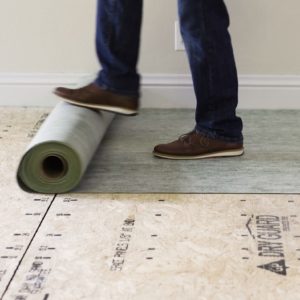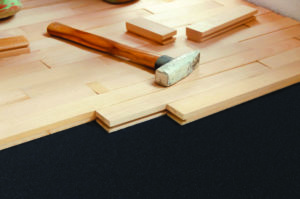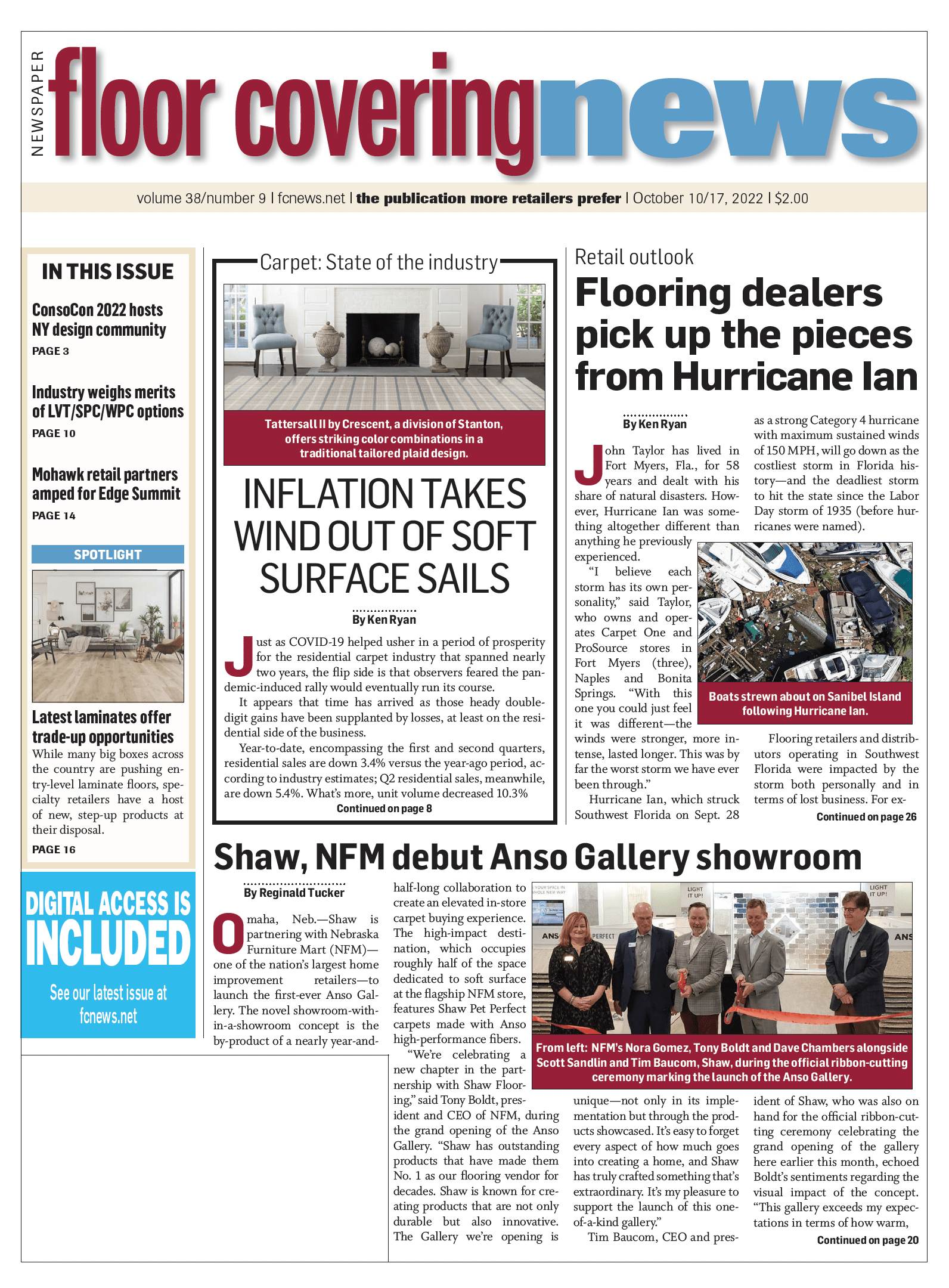 For many consumers, padding might be an after-thought when purchasing a new floor. For retailers, however, it should be the exact opposite. Padding and cushion can be used as a vehicle to upsell eager customers. With its added benefits of noise reduction, moisture control and thermal protection, retailers can entice their clients to add higher quality underlayments to their next flooring purchase.
For many consumers, padding might be an after-thought when purchasing a new floor. For retailers, however, it should be the exact opposite. Padding and cushion can be used as a vehicle to upsell eager customers. With its added benefits of noise reduction, moisture control and thermal protection, retailers can entice their clients to add higher quality underlayments to their next flooring purchase.
Following are tips from leading cushion and underlayment suppliers to help retailers maximize opportunities with both add-on and trade-up padding products.
TIP # 1: Become the expert
“The biggest tip is to truly know your products,” said Deanna Summers, marketing and account manager, MP Global. “Anybody can say this pad will offer a more comfortable walk or provide sound-deadening performance. Truly understanding the features/benefits of your products and their associated testing will allow for you to communicate successfully with the customer.”
Josh Martenn, business development director, Totalworx, Shaw, agreed, making the point that most homeowners are not usually educated on the impor- tance of underlayment when it comes to flooring installation and the difference it can make. “Accessories aren’t always top of mind for consumers,” he said. “It’s up to the RSAs to convey to their customers that cushion and underlayment play a key part in the longevity and overall performance of the floor.”
Additionally, experts point out that by understanding the differences between your products and becoming an expert, it’s easier to justify a product’s cost to the consumer. “If you understand the differences between the products and the amount of sound deadening (for example) they offer, you can provide a simple explanation of why this pad is $0.50 per square foot vs. the other one at $0.35 per square foot,” Summers said.
TIP #2: Keep it simple
It’s natural for retail sales associates to get excited about a product’s performance attributes. However, it’s important to drive home the benefits that padding offers as opposed to the technical details that go into the manufacture of a product. “Do not drown the customer with technical talk,” Summers warned. “Understand what the customer is worried about for her floor and then sell the products that speak best to those needs. Understanding some of her pain points and what she cares about for their new flooring can be a great exploration in the sales process with the customer.”
Chris Palmer, vice president of sales for Leggett & Platt—a producer of premium cushion— concurred. “Speak to the benefits of your best cushion—the protection and performance it offers,” he explained. “The consumer is looking for your recommendation.”
Instead of presenting customers with technical information they might not understand, Palmer suggested placing an underlayment sample on the showroom floor along with the floor sample and asking customers to feel the difference it makes. “It’s important to tell her you highly recommend this product and then reinforce it by reminding her that it will extend the life of her new floor, provide protection and make the home more comfortable,” he explained.
In that same vein, David Jackson, technical services manager, Sika Corp., suggested pointing out the major, easy-to-understand benefits such as acoustical abatement, moisture control and thermal protection. “Educating consumers on the added value of flooring underlayment is crucial to a retailer’s ability to sell and cross-promote systems, improving their bottom line exponentially,” he said.

TIP # 3: Sell the whole system
One of the more effective ways to promote padding—especially higher-end products—is to demonstrate how the product works in conjunction with the flooring material. In other words, sell the system. “While the individual sale of an underlayment is not to be discounted, the most worthwhile approach for retailers is to integrate their underlayments into solution-based, multi-tier system product offerings from single-source suppliers,” Sika’s Jackson explained. When installed properly, Jackson said complete systems can offer the highest degree of overall value that provide the consumer with a warm, dry and desirable solid-sounding floor—something that can easily appeal to the customer.
Experts say upgraded cushion and underlayments give the retailer the full selling experience while providing the best buying experience for the consumer. Hence the importance of packaging the installation to simplify the purchasing process for the shopper. “If the retailers are not offering all the aspects of the installation, then they are forcing the end user to shop other places or competitors,” said Marcus Guy, vice president and general manager of pad and cushion, Mohawk. “This could risk them the whole job pack.”
TIP #4: Start at the top
Whether they’re buying a new flooring product or a brand new car, customers generally don’t like surprises—especially after they have been given a quote. That’s why experts recommend leading with your best cushion versus starting low and then trying to work your way up from there to higher-priced padding. “Never start off with offering to sell a lower-quality underlayment that has inferior qualities than the premium underlayments,” advised Jim Wink, vice president of sales and marketing, Foam Products.
What’s more, Wink stressed the importance of doing right by the customer and educating them on all the benefits of the premium underlayment options. “The customer will share this better experience with their friends, so you as the retailer will get new business,” he said.
TIP #5: Avoid late add-ons
The most successful sales reps quote customers for the entire job when providing estimates. While this approach might, at first, increase the likelihood of “sticker shock,” it avoids the messy situation of having to come back to the customer with a higher estimate than what was originally proposed.
“Always include the flooring underlayment in the itemized estimate and explain why it’s needed,” Wink explained. “The customer does not know, so they will respect your expertise and honest explanation.”

